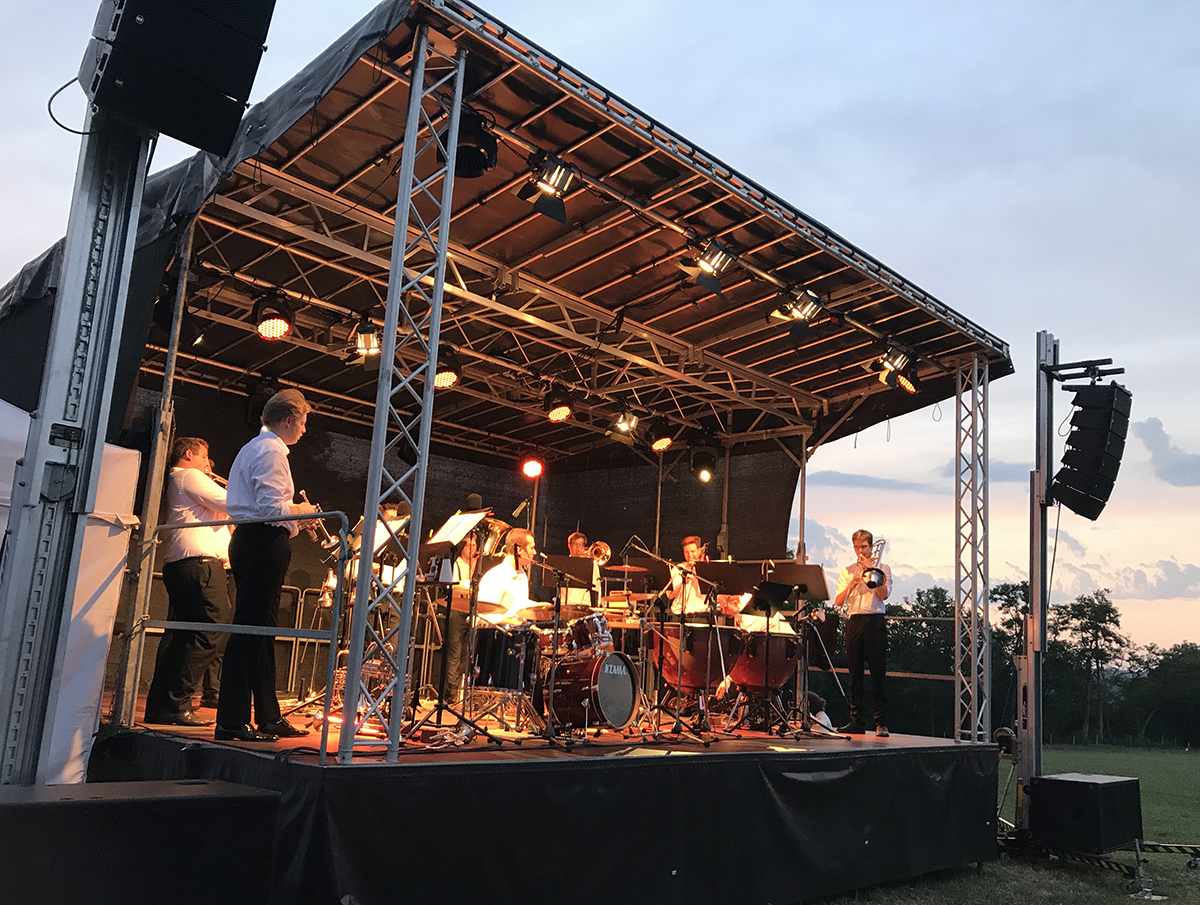If you are looking to hire a stage system for an event there are many considerations on top budget you need to think about. Many organisers fall into the trap of looking at cost. First rather than what and how the stage will be used and the audience it is for.
What is my event about and why does it need a stage?
Sounds like a daft question but actually it is really important to think about. It could mean the difference between paying too much, over specifying your needs or disappointing your audience, because the stage is too small or not loud enough.
Your event environment and how many people you are entertaining will really will help you decide on your stage specs. You need a stage that is big enough for the performers to go on and large enough for the audience in front. It goes without saying that the bigger the crowd the more rescuers you will need.
What type of stage will I need for my event.
There are a few different type of stage structures that suit different event spaces and audience sizes. There are a number of things to think about around the event space.
- What is the access to the event space.
- How much space do I have for the stage and audience area.
- How much set up and de-rig time is available
- Are there any restrictions on the type of stage we can use
There are pitfalls and advantages to the different types of stage available here are a few examples of stage types and constructions.
Curtain Sider Trailers as Stages
Should I use a curtain side trailer as a stage? The simple answer is no, they are dangerous. More importantly there are a number of issues around safety and non compliance of British Standards and Building regulations. Based on stability, construction, non public access and weather protection. The Health and Safety Executive has the power to close full event sites where stages are being used that are deemed unsafe.
More info transport trailers and why you should not use them click here.
Modular Stages – Deck and Truss
Based on traditional stage decks and a separate stage truss roof system. These stages are very versatile and can come in may different styles and sizes. Predominately the more popular system, they are used in all types of event spaces from streets to festivals.
The versatility comes at a cost, as the stages take time to set up. They are not a quick solution and can require additional days for set up and de-rig. Not designed for city centre applications or single day events.
Pop up – Inflatable roof stages
Still based on a modular stage deck system these stages are quicker to set up than truss based stage systems. Easier to use on smaller 1 day events but come with a few disadvantages.
They are not designed for evening performances, the roof is in essence an inflatable that requires a fan to keep it inflated. There are no rigging points for lighting or speakers. What happens if the electric or fan fails. The stage roof deflates and can at worst trap acts and equipment under it.
Mobile Trailer Stage Systems
These systems are mobile in the respect to getting on to site and in position. The stages are based on a trailer and mechanically fold out and up to create the roof and floor. They have a fast set up time. Our trailer stages are set up ready for sound, lighting and rigging in under 30 minutes. Here is a video of our large stage for you to see how it works.
Available in different sizes for audiences from 300 to 10,000 people they really are the most versatile system available. Perfect for 1 day or more events where set up time is tight or limited. Ideal for inner or city centre areas. For more information click here.
The event space in front of your stage is really important.
When you are looking for a price for a stage, sound and lighting. The first things the production company will ask is how many people maximum in front of the stage area and how big is the area where the crowd is.
How much does it cost to hire a stage.
It really is important to be honest with your projected crowd numbers and the size of the crowd area. The productions company will price based on this, to make sure the stage size, sound levels and lighting are correct to the size and area where the crowd is.
Who is on the stage really matters to the price, your costs and ticket price.
The difference between a stage with DJ’s and dancers, solo, duo performers and full bands, choirs and orchestra’s is huge. The more complicated the performance specifications the more on stage equipment and technical staff are needed. Be really clear with production companies on who you are booking.
The more famous the act the more the complicated technical rider will be. Get the costs before deciding if your event is financially viable or not. This all needs reflecting in the event ticket price
What do I need on my stage requirements checklist.
1. Does the stage system match my event, size, acts, audience and budget
2. Stage risk assessment and method statements
3. Stage technical documents, size, weight bearing and structural certificates
4. Stage area security, barriers in front and round the stage and staffing
5. Back stage area, who is providing this for the acts
6. Stage and acts management at your event, who is doing this
7. Power for the stage, who is providing this and how much is needed
8. What is the production company supplying, defined equipment and technical roles
If you are in doubt about anything we have said in the is guide, then get in touch with us. We are happy to help you make the right decisions on what you need from a performance stage.


